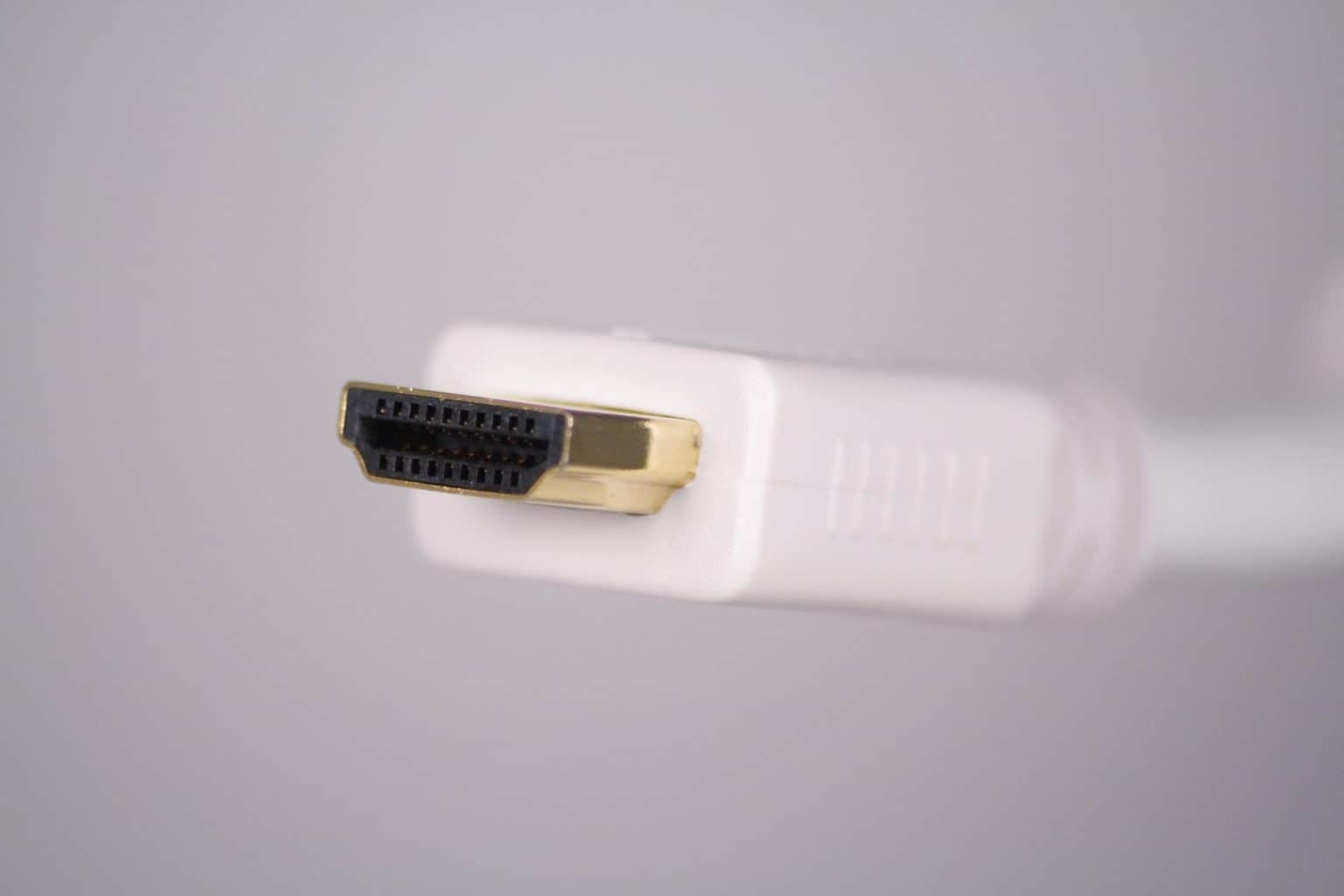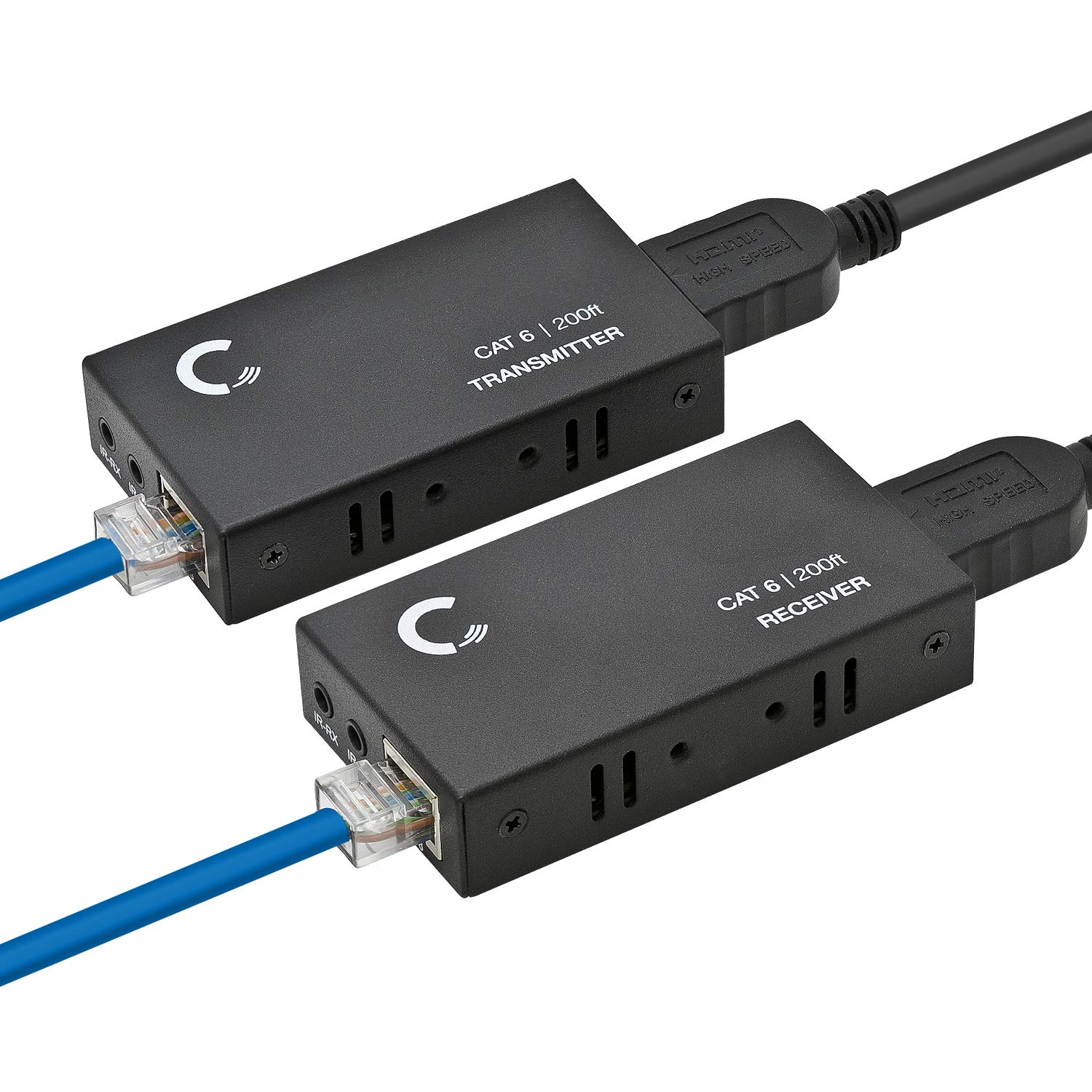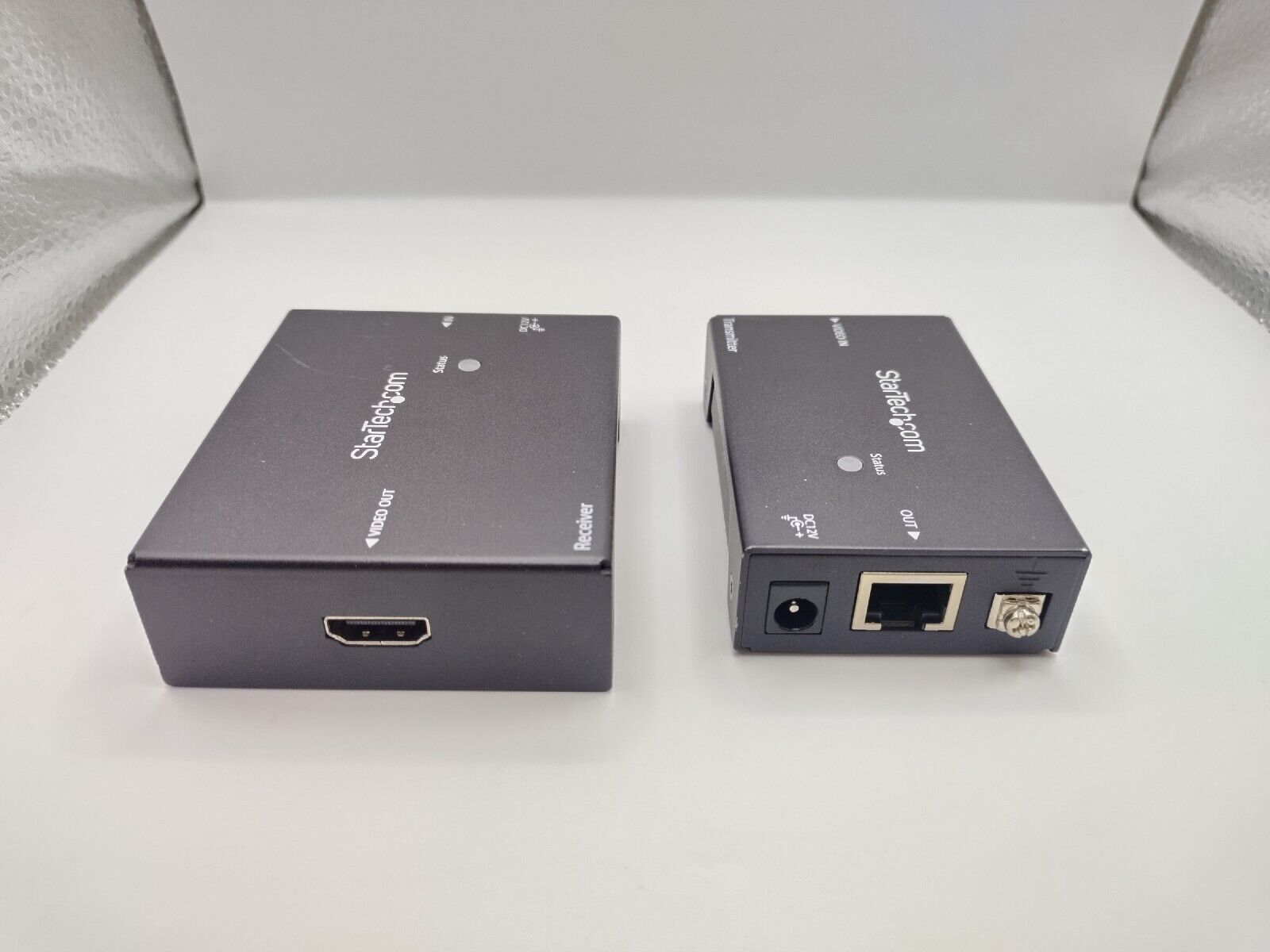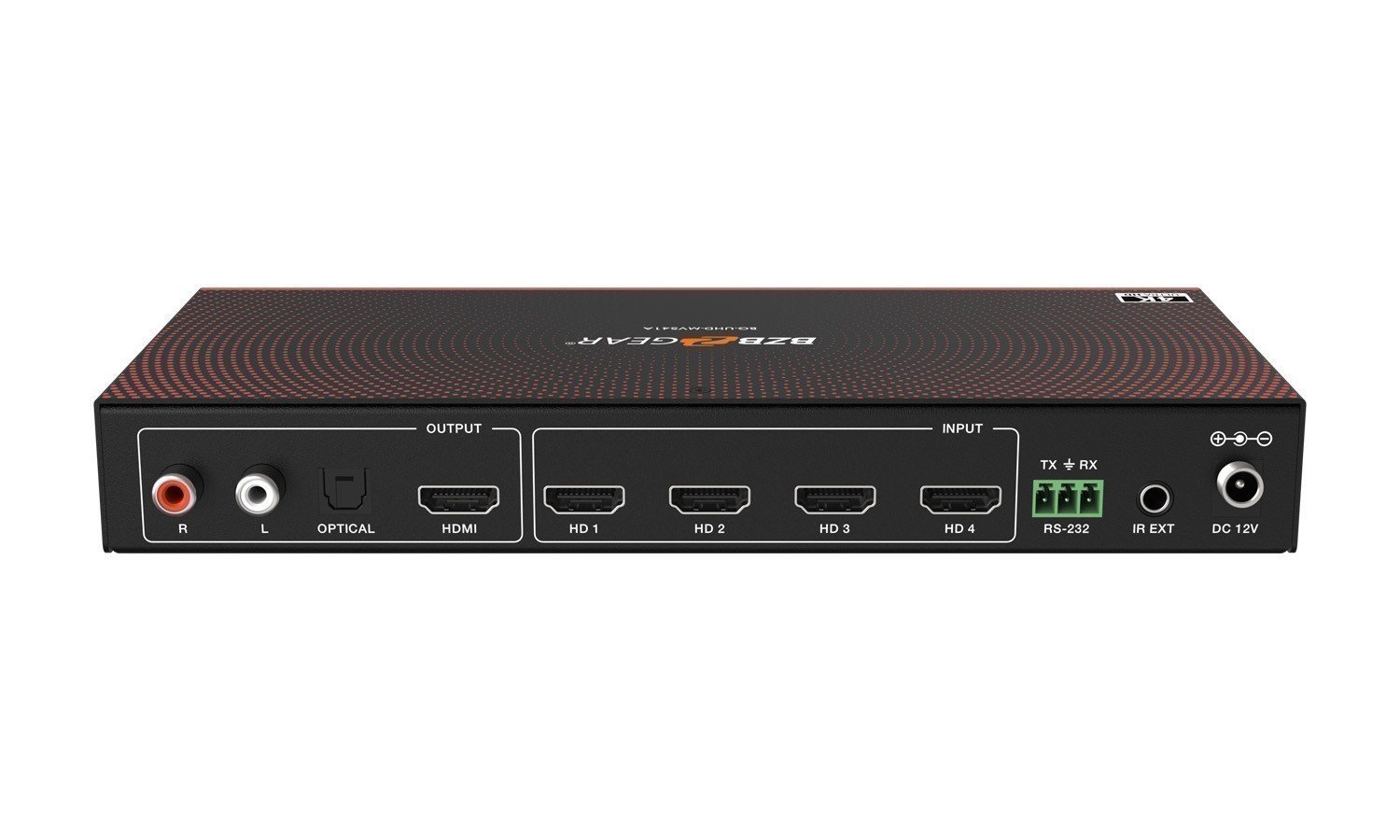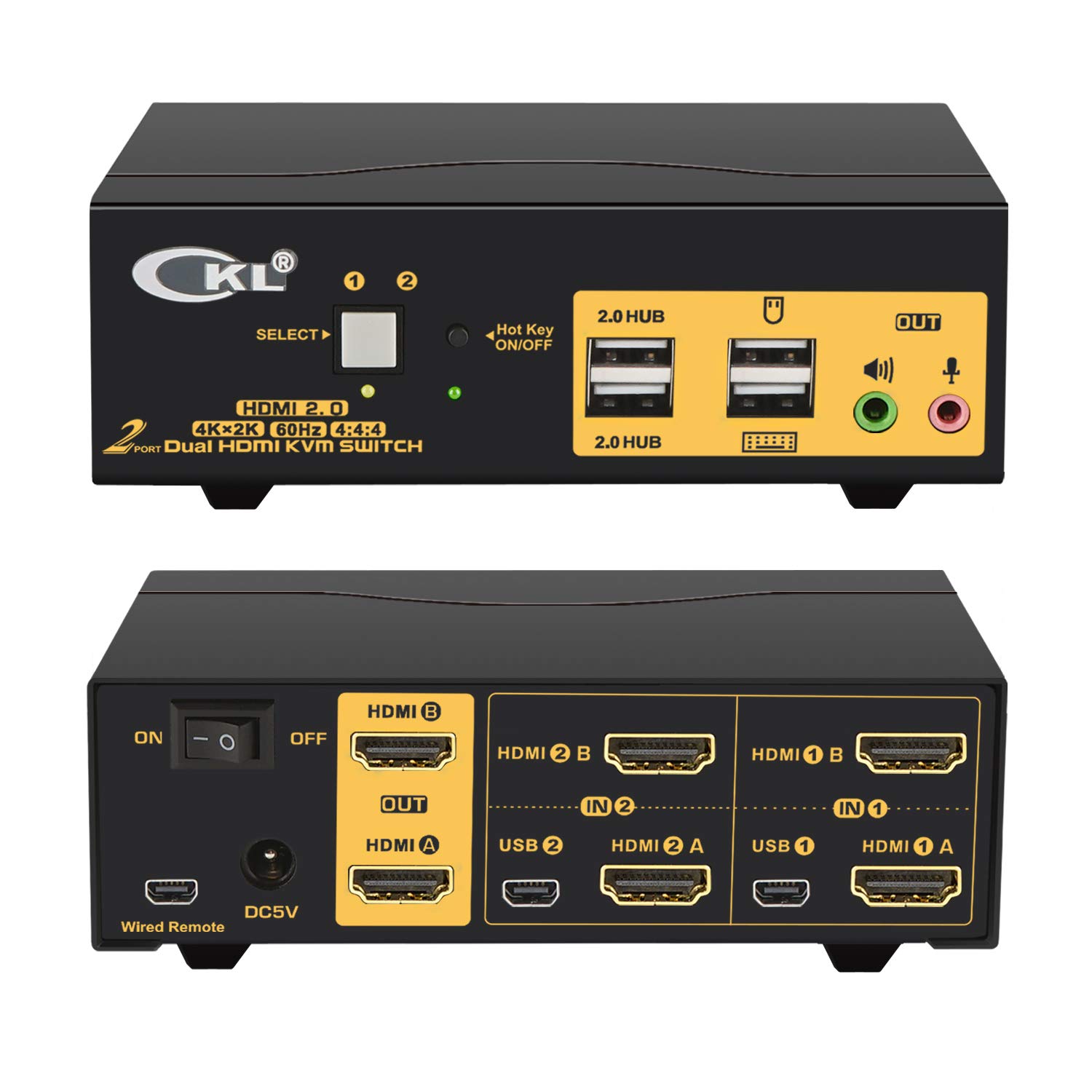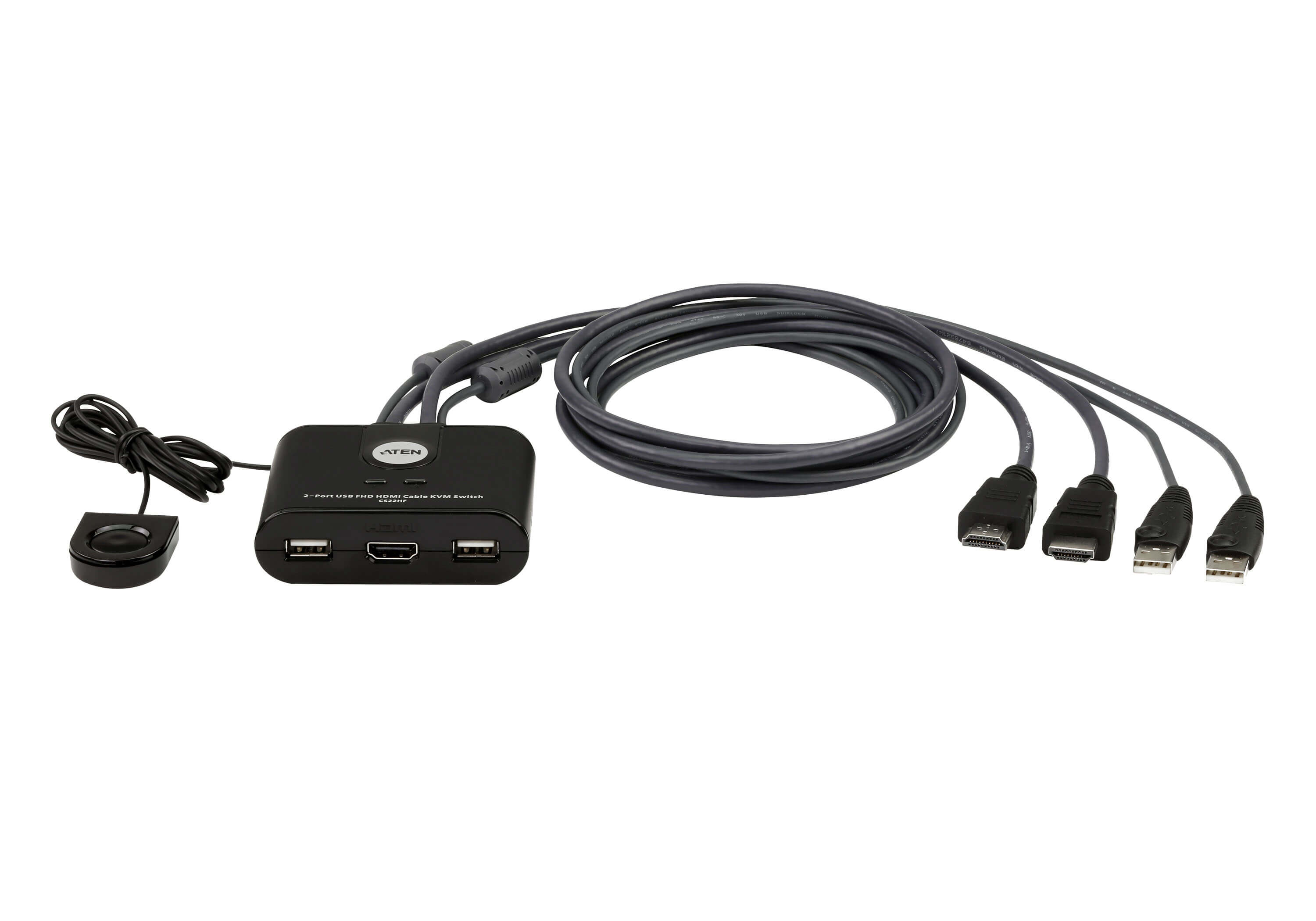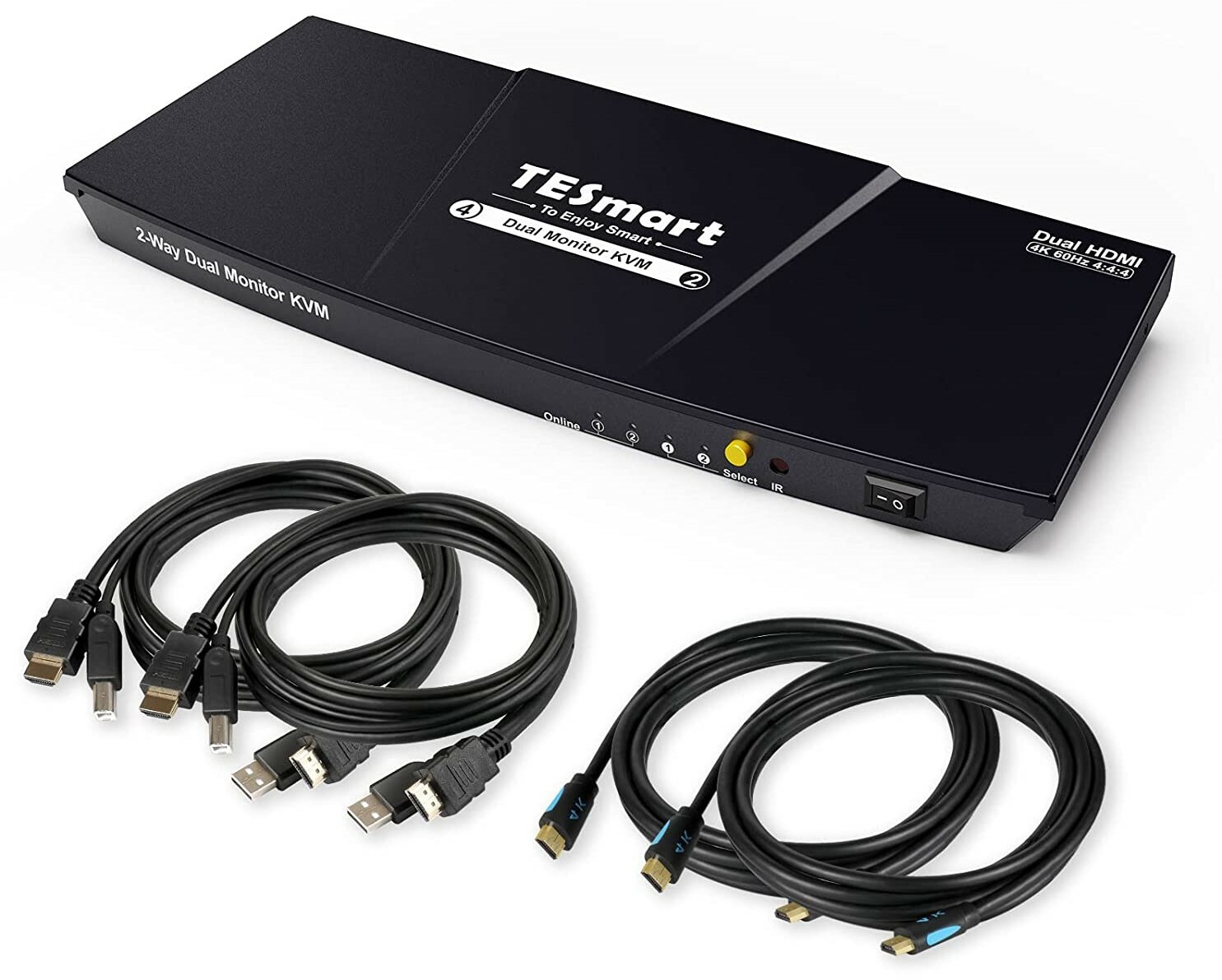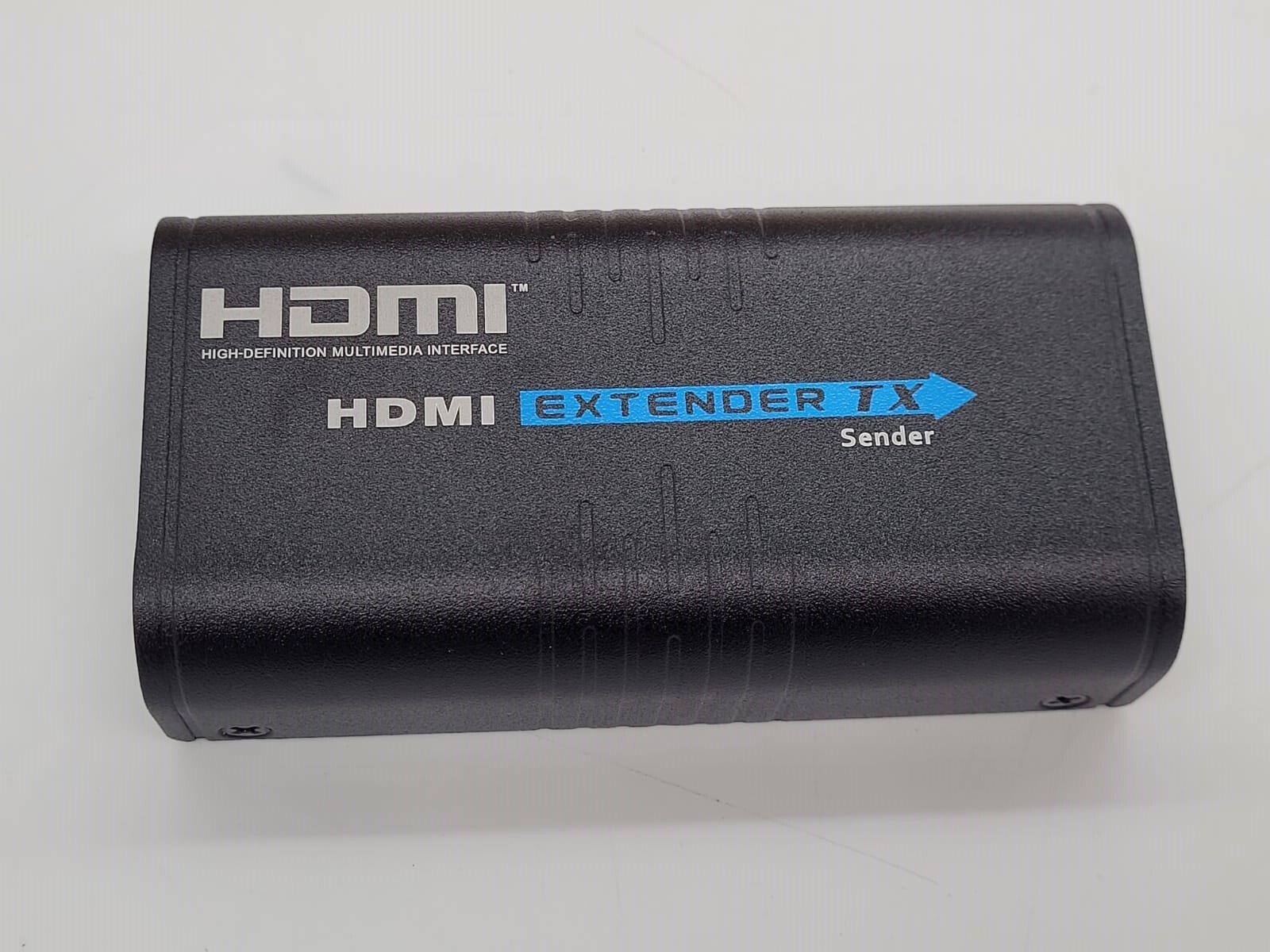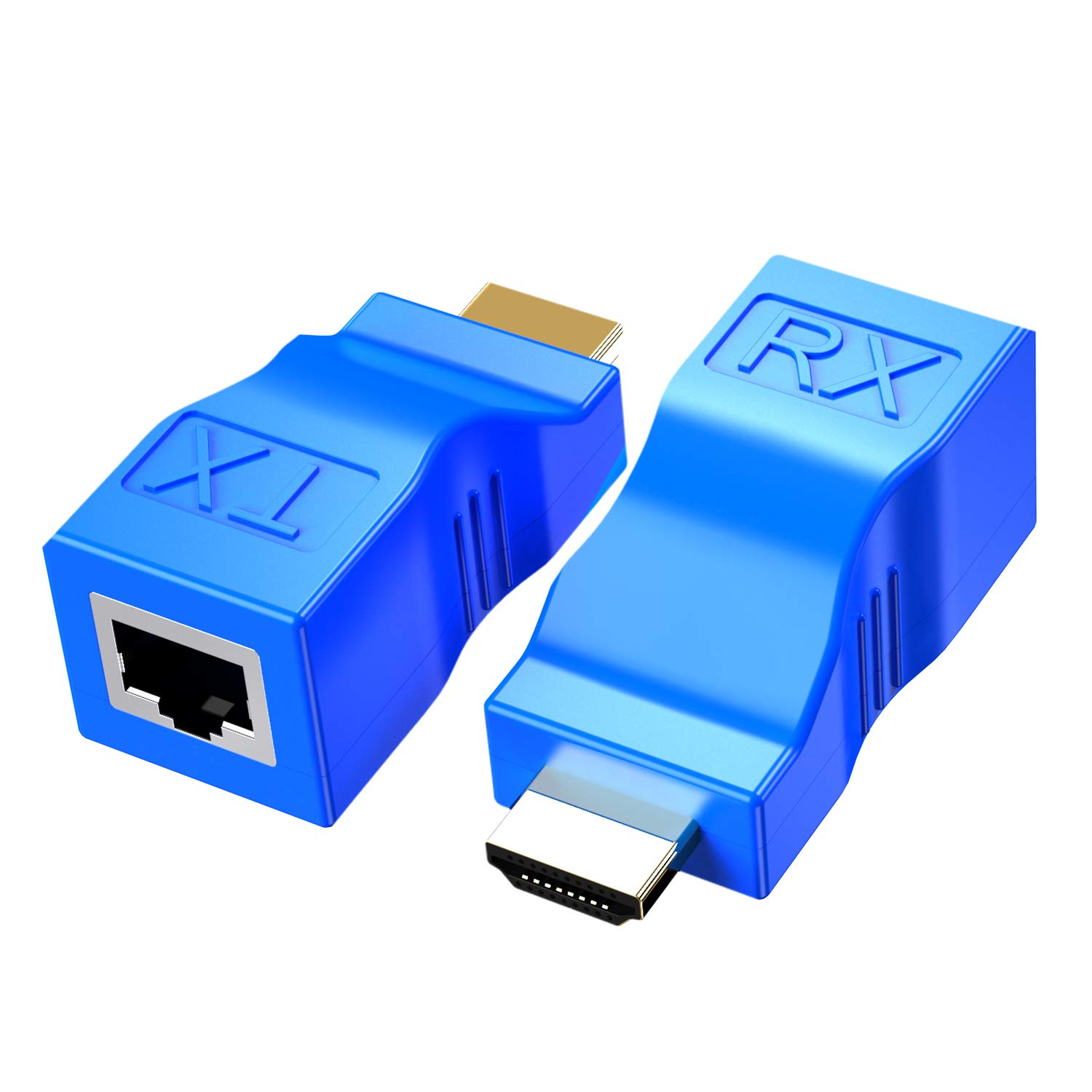Introduction
The rapid advancement of technology has revolutionized the way we connect and interact with our devices. HDMI (High-Definition Multimedia Interface) has become the industry standard for transmitting high-quality audio and video signals between various devices such as TVs, computers, gaming consoles, and more. HDMI provides a seamless and efficient connection, allowing users to enjoy stunning visuals and immersive audio experiences.
However, in order for HDMI to function optimally, there is a critical component at play known as the HDMI EDID (Extended Display Identification Data). EDID is essentially the communication link between the source device (such as a Blu-ray player) and the display device (such as a TV or monitor). It allows the source device to send the appropriate video and audio signals that are compatible with the display, ensuring a smooth and accurate transmission.
Understanding what HDMI EDID is and how it works is essential for both casual users and tech enthusiasts alike. This article will delve into the details of HDMI EDID, its importance in ensuring proper communication between devices, common issues that may arise, and troubleshooting tips to resolve them.
So, grab your popcorn, sit back, and let’s explore the fascinating world of HDMI EDID together.
What Is HDMI EDID?
HDMI EDID stands for Extended Display Identification Data. It is a standardized protocol that allows the source device to communicate with the display device and exchange information about their capabilities. This communication is crucial for establishing the best possible connection and ensuring that the video and audio signals are transmitted correctly.
The HDMI EDID contains vital information about the display device, including its supported video formats, screen resolutions, refresh rates, color capabilities, audio formats, and more. This data is stored in a small memory chip within the display device, which is accessed by the source device when the HDMI connection is established.
When you connect an HDMI device, such as a Blu-ray player or gaming console, to a display device like a TV or monitor, the source device sends out a request for the display device’s EDID information. The display device then responds by transmitting its EDID, providing the necessary details to the source device.
Once the source device receives the EDID, it analyzes the information to determine the optimal video and audio settings that both the source and display devices support. It then adjusts its output accordingly, ensuring that the video resolution, aspect ratio, refresh rate, color space, and audio format are compatible with the display’s capabilities. This seamless communication between the source and display devices helps deliver the best possible audiovisual experience.
In addition to basic information about the display’s capabilities, HDMI EDID also includes information about the display’s vendor, model name, and serial number. This allows the source device to recognize and identify the connected display, which can be particularly useful when dealing with multiple displays or complex audiovisual setups.
Overall, HDMI EDID plays a critical role in establishing a successful HDMI connection by enabling the source device to adjust its output to match the capabilities of the connected display. This ensures that the video and audio signals are transmitted accurately, resulting in a high-quality viewing and listening experience.
How Does HDMI EDID Work?
HDMI EDID works by facilitating communication between the source device and the display device through a series of data exchanges. When an HDMI connection is established, the source device sends a request to the display device to provide its EDID information. The display device then responds by transmitting its EDID data back to the source device.
The EDID information contains detailed specifications about the display device, including its supported video resolutions, refresh rates, color capabilities, audio formats, and more. It serves as a reference guide for the source device to determine the optimal video and audio settings that are compatible with the connected display.
Once the source device receives the EDID data, it analyzes the information and adjusts its output accordingly. This involves checking the supported video resolutions and selecting the highest resolution that both the source and display device can handle. It also considers the available refresh rates, color spaces, and audio formats supported by both devices.
In some cases, the source device may offer multiple audio and video options. Using the EDID data, the source device selects the most suitable option for the connected display. For example, if the display supports Dolby Digital audio, the source device will send out Dolby Digital audio signals instead of other audio formats.
HDMI EDID data also ensures that the display device receives the correct video signal format, such as progressive scan or interlaced video, based on its capabilities. This ensures that the display device can reproduce the video content accurately without any visual artifacts.
It is worth noting that HDMI EDID is not a one-time process. Whenever the HDMI connection is established or the devices are powered on, the source device sends a new request for EDID information. This allows for dynamic detection and adjustment if any changes to the display device, such as resolution or audio capabilities, are made.
Overall, HDMI EDID acts as a communication bridge between the source and display devices, ensuring that they can establish a compatible connection and deliver the best possible audiovisual experience based on the capabilities of the display device.
Importance of HDMI EDID
The HDMI EDID plays a crucial role in ensuring a seamless and optimal audiovisual experience when connecting HDMI devices. Here are several key reasons why HDMI EDID is important:
- Compatibility: One of the primary functions of HDMI EDID is to establish compatibility between the source device and the display device. The EDID information allows the source device to adjust its output to match the capabilities of the connected display. This ensures that the video resolution, refresh rate, color space, and audio format are in harmony with the display device, preventing compatibility issues and ensuring that the content is rendered correctly.
- Optimal Performance: HDMI EDID enables devices to deliver the best possible performance by ensuring that they work together seamlessly. By using the display device’s EDID information, the source device can determine the highest resolution, refresh rate, and color capabilities supported by the display. This allows for a visually stunning and immersive experience without any loss of quality or distortion.
- Automation: HDMI EDID facilitates automated configuration between devices. When the HDMI connection is established, the devices communicate with each other and automatically adjust the output settings based on the EDID data. Users don’t need to manually configure the settings or worry about mismatched resolutions or audio formats, saving time and effort.
- Improved User Experience: HDMI EDID ensures that the content is displayed in the best possible quality based on the capabilities of the display device. Users can enjoy crisp, clear visuals and high-fidelity audio without any compatibility or configuration issues. This enhances the overall user experience and allows for immersive entertainment, whether it’s gaming, watching movies, or browsing content.
- Flexibility: HDMI EDID allows for seamless integration of various HDMI devices with different capabilities. It enables the source device to adapt its output to match the specific capabilities of the display device. This flexibility makes it easier for users to connect different devices, such as gaming consoles, Blu-ray players, or streaming devices, to a range of displays without worrying about compatibility issues.
In summary, HDMI EDID is of utmost importance in ensuring compatibility, optimal performance, automation, improved user experience, and flexibility when connecting HDMI devices. It acts as a bridge between the source device and the display device, allowing for smooth communication and delivering a seamless audiovisual experience to users.
Common Issues with HDMI EDID
While HDMI EDID is essential for establishing a seamless connection between HDMI devices, there are some common issues that users may encounter. Understanding these issues can help troubleshoot and resolve any potential problems. Here are a few of the most common issues related to HDMI EDID:
- Incorrect Display Settings: Sometimes, the EDID data retrieved from the display device may not accurately represent its actual capabilities. This can result in incorrect settings being applied by the source device, leading to issues such as distorted video, incorrect color reproduction, or unsupported resolutions. A mismatch between the detected capabilities and the actual display capabilities can occur due to factors like outdated firmware or incompatible drivers.
- HDMI Handshake Issues: HDMI handshake refers to the process of establishing a connection between the source device and the display device. In certain cases, the HDMI handshake may fail, resulting in a loss of signal or a blank screen. This can occur due to a temporary communication problem between the devices. HDMI handshake issues can be resolved by power cycling the devices, using high-quality HDMI cables, or updating firmware/drivers.
- Unsupported Resolutions: Some display devices have limitations or specific requirements for supported resolutions. If the source device attempts to send a resolution that is not supported by the display device, it can lead to a blank or distorted screen. In such cases, manually adjusting the resolution settings on the source device or selecting a compatible resolution from the display settings can help resolve the issue.
- Audio Compatibility: HDMI EDID also includes audio format information. However, there can be compatibility issues between the source device and the display device regarding supported audio formats. This can result in a lack of sound or distorted audio. If encountering audio compatibility issues, ensuring that the correct audio format is selected on both the source device and the display device, and updating the firmware or drivers, can help resolve the problem.
- CEC Interference: CEC (Consumer Electronics Control) is a feature that allows HDMI devices to control each other. However, CEC signals can sometimes interfere with the HDMI EDID communication, leading to incorrect settings or unstable connection. Disabling CEC features on both the source device and the display device can help resolve such compatibility issues.
When encountering these or other HDMI EDID-related issues, it is recommended to ensure that all devices are powered on, the HDMI cables are securely connected, and the software and firmware are up to date. If the problem persists, referring to the user manuals, contacting customer support, or seeking assistance from a professional can help troubleshoot and resolve the issue effectively.
Troubleshooting HDMI EDID Problems
Encountering issues with HDMI EDID can be frustrating, but fortunately, there are several troubleshooting steps you can take to resolve common problems. Here are some troubleshooting tips to help you tackle HDMI EDID issues:
- Restart and Reconnect: Begin by restarting both the source device and the display device. Power cycling can often resolve temporary communication issues and help establish a new HDMI handshake. Ensure that all HDMI cables are securely connected as well.
- Check HDMI Cabling: Damaged or low-quality HDMI cables can cause signal degradation, resulting in EDID problems. Inspect the HDMI cables for any visible damage and consider using high-quality cables from reputable brands. Try using different HDMI cables to see if the issue is resolved.
- Update Firmware/Drivers: Outdated firmware or drivers can contribute to HDMI EDID problems. Check for firmware updates for both the source device and the display device. Visit the manufacturer’s website to download and install the latest firmware or driver updates. Following the recommended installation instructions is crucial.
- Reset Display Settings: If you are experiencing issues related to incorrect display settings, you can try resetting the display settings on both the source device and the display device. This can often restore the default settings and prompt the devices to exchange EDID information accurately.
- Manually Adjust Display Settings: If the automatic adjustment of display settings doesn’t work, manually selecting the appropriate settings on the source device, such as resolution, refresh rate, and color output, can help resolve compatibility issues. Refer to the user manuals or online resources for guidance on the correct settings for your specific devices.
- Disable CEC Features: CEC interference can cause EDID problems. Disabling CEC features on both the source and display devices can help eliminate any potential conflicts and improve communication. Look for CEC settings in the device menus and disable them if necessary.
- Consult Manufacturer Support: If all else fails, don’t hesitate to reach out to the manufacturer’s support channels. They often have dedicated technical support teams who can provide specific guidance based on your devices and help troubleshoot more complex HDMI EDID problems.
By following these troubleshooting steps, you have a good chance of resolving HDMI EDID problems and restoring a smooth and optimal connection between your HDMI devices. Remember to always refer to the user manuals and documentation provided with your devices for more detailed instructions and guidance.
Conclusion
HDMI EDID is a crucial component in the world of HDMI connectivity, ensuring seamless communication between source devices and display devices. By exchanging important information about the display’s capabilities, HDMI EDID allows the source device to adjust its output settings to match the display’s requirements, ensuring optimal performance and compatibility.
Throughout this article, we have explored the concept of HDMI EDID, understanding its purpose and functionality. We have seen how HDMI EDID enables devices to automatically configure their settings, delivering the best possible audiovisual experience to users.
We have also discussed common issues related to HDMI EDID, such as incorrect display settings, HDMI handshake problems, unsupported resolutions, audio compatibility issues, and CEC interference. By being aware of these issues, users can take the necessary troubleshooting steps to resolve them and restore a seamless HDMI connection.
In troubleshooting HDMI EDID problems, it is crucial to restart and reconnect the devices, check HDMI cables, update firmware and drivers, reset display settings, manually adjust settings if needed, and consider disabling CEC features when necessary. Seeking assistance from manufacturer support can also be beneficial in resolving complex issues.
In conclusion, understanding HDMI EDID and addressing any related issues that may arise is essential for ensuring a smooth and optimal audiovisual experience when connecting HDMI devices. By leveraging the power of HDMI EDID, users can enjoy the full potential of their devices and immerse themselves in captivating audio and stunning visuals.







